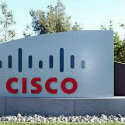Providing equipment and software for SDN, traditional and DevOps networks.

Cisco has introduced an array of new products designed to help service providers and enterprises automate network management, along with new switches.
Cisco announced the tools at its CiscoLive conference in early June. It was, at first appearance, a confusing avalanche of many products without much apparent connection between them. We sat down with Cisco at their company headquarters in San Jose, Calif., recently, where several members of their networking team explained how everything relates to each other and what it all means to service providers.
The products fit into Cisco's three major networking categories:
Application Centric Infrastructure is Cisco's SDN offering, based on the company's Nexus switches. ACI customers are both service provides and enterprises. ACI takes an application-centric view of the universe; network managers specify what resources applications require and the ACI is designed to automatically fulfill those needs. (See Cisco Ships Its SDN Architecture -- Almost.)
ACI is growing fast, with customer numbers nearly doubling during the past fiscal quarter, Ish Limkakeng, VP product management for Cisco's Insieme business unit, told Light Reading. More than 585 customers use the Application Policy Infrastructure Controller (APIC), which is Cisco's SDN controller, packaged as an appliance. The APIC is essential to Cisco's SDN strategy, so only the customers using APIC are using SDN.
Nexus 9000 customers total more than 2,655, a number which includes the APIC customers.
Programmable Fabric is Cisco's traditional network offering, for network managers who look at the network as the center of the universe. Fabric users are concerned with ports and flows rather than being concerned directly with application and user needs. Fabric customers are service providers.
Programmable Network applies traditional data center server principles and tools to managing networks. It's Cisco's DevOps product line. Programmable Network customers are primarily enterprises, and also leading edge service providers that are adopting DevOps for their own networks.
So what did Cisco announce? Let's start with ACI -- this month, Cisco is shipping:
New Nexus 3000 switches for the service provider and hosted environment. The Nexus 3232C is a compact, 1RU 32-port 100G switch, and the 3264Q is a 2U, 64-port, 40G device. They'll be available in the third quarter, priced starting at $35,000 list.
"Stretch fabric" supporting connections up to 150km, either in a metro region or even within a single multi-floor, multi-room data center, for increased flexibility of network operators to locate elements.
For the Programmable Fabric, in the second half of the year, Cisco will introduce:
Ethernet VPN support for BGP, to bring BGP support into the data center, across the entire Nexus portfolio. EVPN/BGP support was previously available only on the Nexus 9000. The new standard opens the door to support for third-party controllers, though Cisco is not yet announcing partners, says Vijay Venugopal, Cisco director, product marketing.
The Virtual Topology System (VTS), a control system for EVPN fabric, which extends the fabric to include brownfield, legacy equipment that doesn't support VXLAN or EVPN. VTS provides software overlay provisioning and management.
For the Programmable Network, Cisco is introducing a new NX-OS operating system release for the Nexus 3000 and Nexus 9000 switches in the third quarter. It includes enhancements to the NX-API, with support for native third-party applications such as tcollector, Nagios, Ganglia, Puppet and Chef, as well as an SDK for custom application integration. The Nexus product line will get a common NX-API across the Nexus 2000 to Nexus 9000 in the second half of the year.
Want to know more about SDN? Visit Light Reading's SDN technology content channel.
Why this matters
Cisco has recently focused on selling "outcomes," rather than technology -- in other words, selling business results and transformations driven by networking rather than pitching the technology itself. But Cisco has to sell networking products to make payroll and pay its shareholders. While Cisco's salespeople are wining and dining C-level service provider executives and seducing them with talk about business outcomes, Cisco will also be talking with engineers in windowless meeting rooms about products needed to deliver that vision -- products like the ones Cisco announced this month. (See How Cisco Will Compete Against White Box Switches.)
Cisco is trying to transform itself from a box vendor selling its own proprietary, high-margin networking hardware, to a company that integrates products on multivendor networks. But Cisco isn't making itself one peer among many and equal to all -- by building its portfolio on the Nexus switch, Cisco is looking to keep itself in control even while connecting with partners and competitors.
Interestingly, this week Cisco competitor Arista Networks Inc. announced new software that drives in the opposite direction from Cisco ACI. While Cisco's vision for ACI is to abstract network operations details and focus on application needs, Arista's EOS CloudVision is all about network operation details. (See Arista Launches Network-Wide Cloud Automation.)
— Mitch Wagner, 


 , West Coast Bureau Chief, Light Reading. Got a tip about SDN or NFV? Send it to [email protected].
, West Coast Bureau Chief, Light Reading. Got a tip about SDN or NFV? Send it to [email protected].
About the Author(s)
You May Also Like











